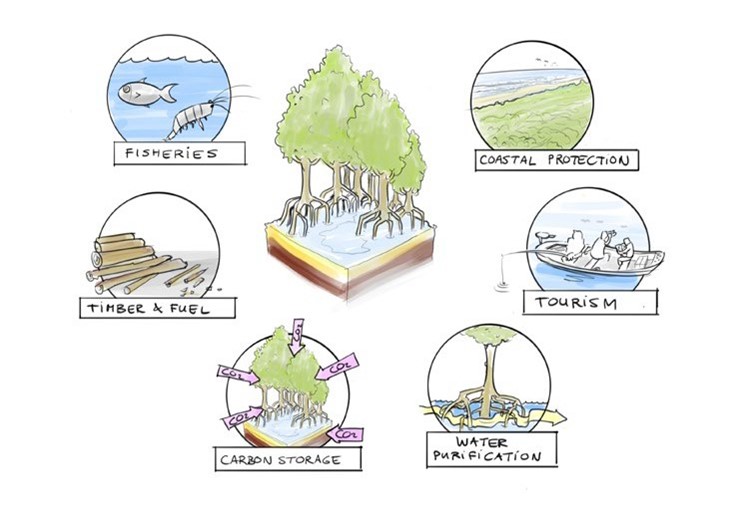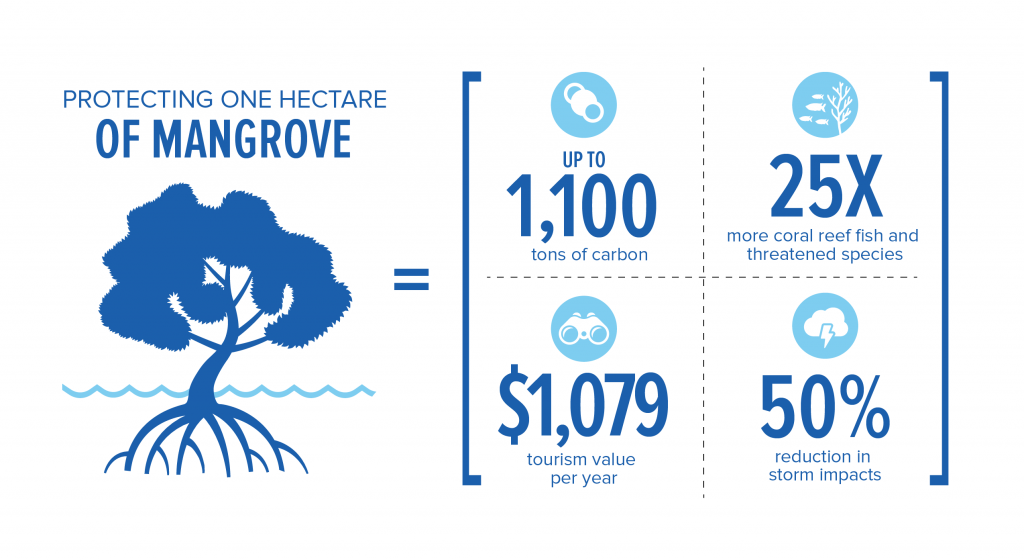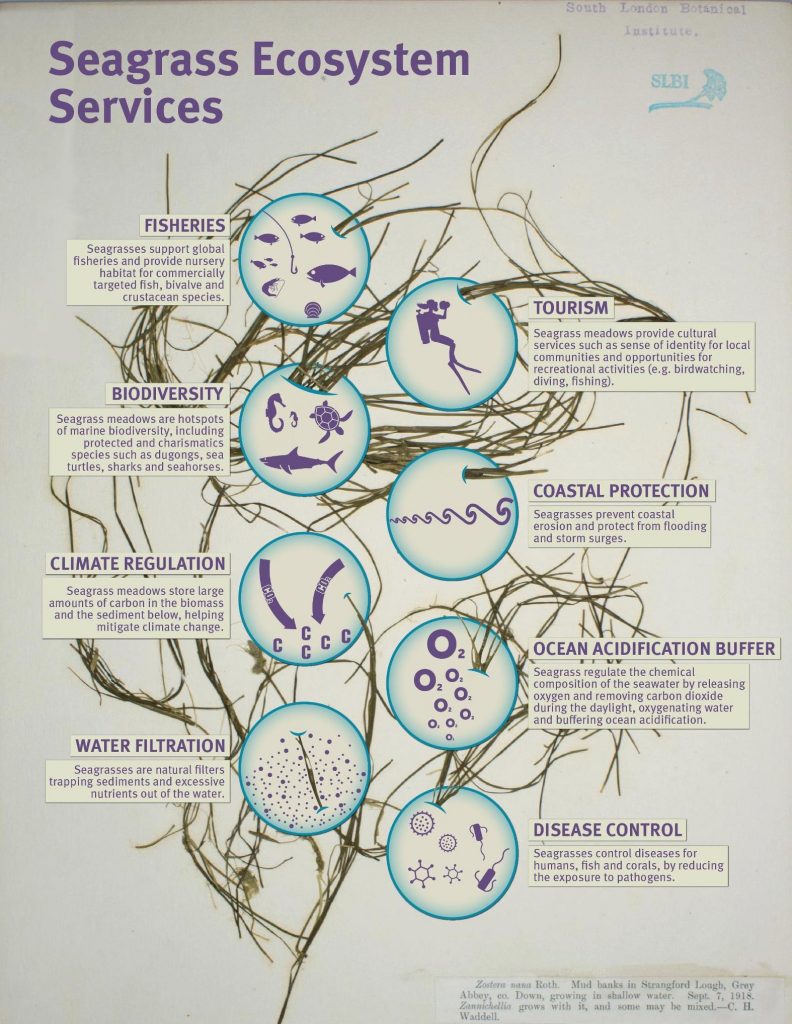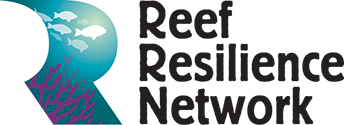Blue Carbon Benefits
Blue carbon ecosystems are very important to many coastal communities because of the valuable benefits that they provide.
In addition to their carbon storage benefits, blue carbon ecosystems also provide jobs and income to local economies, improve water quality, support healthy fisheries, and provide coastal protection. Mangroves act as natural barriers - they stabilize shorelines and reduce wave energy to reduce flood risk to coastal communities from storm surge and sea-level rise. Seagrass meadows trap suspended sediments in their roots which increases light attenuation, improves water quality, and reduces erosion. Coastal wetlands absorb pollutants (e.g., heavy metals, nutrients, suspended matter) thus helping to maintain water quality and preventing eutrophication. These ecosystems provide important nursery habitat and breeding grounds to support fisheries and a variety of recreational opportunities (e.g., snorkeling, recreational fishing and boating, ecotourism).
The following graphics highlight the benefits of mangroves:

Ecosystem services provided by mangroves. Source: Wetlands International 2016

Benefits of protecting one hectare of mangrove forest. Source: Conservation International
Research suggests that the ecosystem services that mangroves provide are worth an estimated US$33,000-57,000 per hectare per year to the national economies of developing countries with mangroves. ref
- Siikamäki et al. (2012) developed global estimates of the projected carbon emissions from mangrove loss and the cost of avoiding the emissions; they found that given the recent range of market prices for carbon offsets and the cost of reducing emissions from other sources, protecting mangroves for their carbon is an economically viable proposition. ref
- A study in Indonesia found that Indonesian mangroves contain 14 billion metric tonnes of carbon (PgC) representing one third of global coastal carbon stocks. ref Mangrove deforestation in Indonesia results in a loss of 190 million metric tonnes of CO2 annually. By avoiding mangrove deforestation, Indonesia could reach a quarter of its emissions reduction target of 26% by 2020. ref
- Estrada et al. (2015) assessed the economic value of carbon storage and sequestration in mangroves in southeastern Brazil and found that mean values varied based on mangrove type (e.g., 19.00 ± 10.00 US$ ha−1 yr−1 for basin forests and high intertidal to 82.28 ± 32.10 US$ ha−1 yr−1 for fringe forests and low intertidal). The authors estimated the total carbon sequestration value of these mangroves to be US$455,827 annually. ref See the Resources section below for additional information on the ecosystem services of blue carbon ecosystems.
The following graphic highlights the benefits of seagrass:

Source: Potouroglou, M., L. Westerveld, G. Fylakis. 2020. Unsung Heroes of our Oceans. Story Map, United Nations Environment Programme and GRID-Arendal.
Learn more about seagrass – its status, value, threats, and management recommendations.
Resources
Mangroves
Role of Mangroves in Fisheries Enhancement
Current State of Knowledge on Mangrove Fishery Values
Building an Expert-Judgment-Based Model of Mangrove Fisheries
The Response of Mangrove Soil Surface Elevation to Sea Level Rise
Reduction of Wind and Swell Waves by Mangroves
Storm Surge Reduction by Mangroves
Effectiveness, Costs and Coastal Protection Benefits of Natural and Nature-Based Defences
Mangroves for Coastal Defense: Guidelines for Coastal Managers & Policy Makers
Salt Marshes and Seagrass
Developing the Next Suite of Tools for Setting Quantifiable Objectives for Habitat Management
Protective Role of Coastal Marshes: A Systematic Review and Meta-analysis
Seagrass Ecosystem Services and Their Variability across Genera and Geographical Regions
Seagrass Ecosystem Services – What’s Next
Out of the Blue: Value of Seagrasses to the Environment and to People
Unsung Heroes of our Oceans: Seagrass - All You Need to Know
